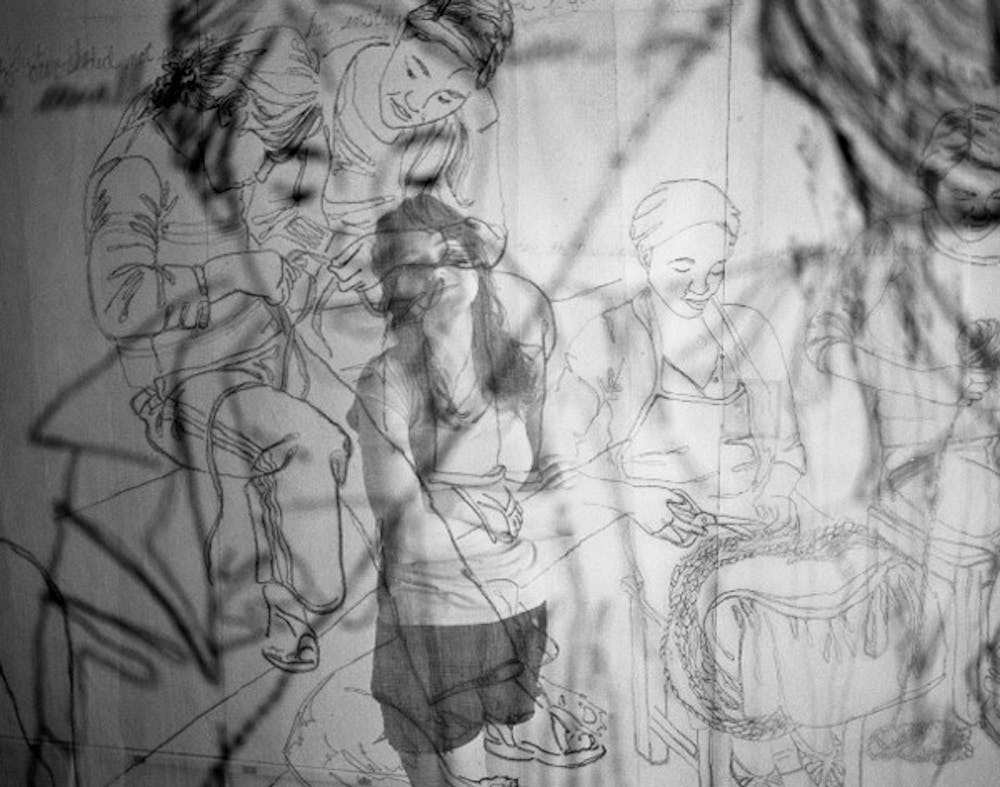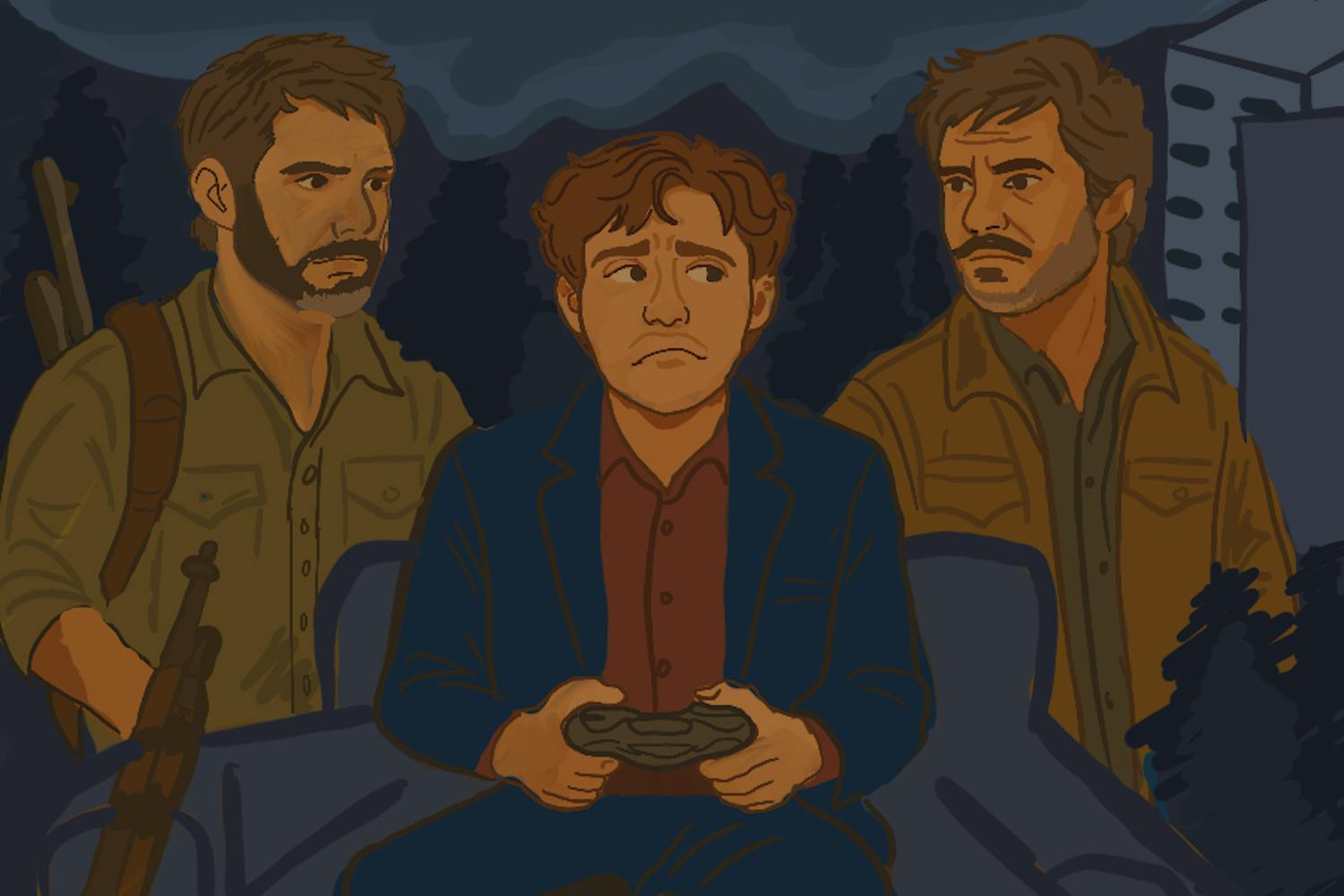In many cultures around the world, creating textiles is a traditional practice of women that helps cultivate unity and confidence between generations. While weaving techniques vary among geographical locations, the customs that come with the skill are uniform.
Fibers graduate student Kelsey Wiskirchen traveled to Bolivia and South Africa and observed the camaraderie that comes with weaving when she stayed with several women’s weaving cooperatives. Inspired by the strength she felt among the women, she developed “Handed On” as her MFA thesis exhibit that combines woven art with the stories she took away from her travels.
“When I came back from Bolivia, I realized I was extremely interested in working with women in that capacity and working with groups of women who are supporting their families through the craft,” Wiskirchen said. “I realized when women are working together, or when any group of people are working together, there’s a sharing of stories that happens inevitably from spending time together.”
The exhibit, featured at the Harry Wood Gallery at ASU from April 9-20, showcases 30 6-foot panels along with smaller panels of stitched writing all developed from stories of how women have influenced the lives of others. Wiskirchen will also be at the exhibit through the next two weeks working on a loom and demonstrating the craft.
In her travels, she worked with local women to develop dyes and learn different textile weaving techniques.
“What I really loved about South Africa was seeing that generational sharing,” she said. “The women who had originally founded the women’s weaving co-op were still there and are now grandmothers, and their daughters have been taught and even their daughters were there too. There were three generations of women and that was really fun to experience.”
Upon her return, Wiskirchen also observed the weaving practices of local Arizona women, several of which are incorporated into her work.
“I didn’t want to just be romanticizing the idea of weaving in countries I had never been to before. I also wanted to make sure I was getting to know the women in this community.”
Her pieces are developed from photographs she had taken on her travels. Wiskirchen said that the process to create each panel takes generally 20 to 30 hours, with several steps that include drawing out the photos, treating materials, stitching and toning colors.
When it came to creating the exhibit, Wiskirchen considered the reason as to why she stitched the panels instead of simply drawing them.
“There is this universality to this action of weaving that is going on, and I feel like it becomes a unifying factor in the work,” she said. “The stitched line has a raised quality that a mark on a paper just does not have and that textural difference becomes important.”
As for what she hopes viewers take away from the exhibit, Wiskirchen said she wants her work to trigger anecdotes that are similar to the solidarity she found among the women she stayed with on her travels.
“I hope that there are people who are compelled to read the panels and also share their own stories because I am really interested in continuing with the stitching and documenting of peoples memories.”
Reach the reporter at newlin.tillotson@asu.edu
Follow us on Twitter or like us on Facebook. Click here to subscribe to the daily State Press email newsletter.





